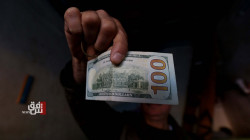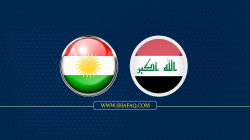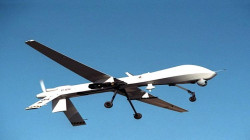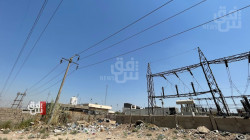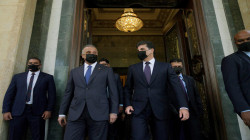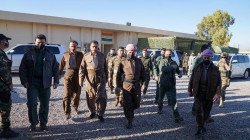Report suggests Erbil could play a role in the foreign forces' withdrawal from Iraq
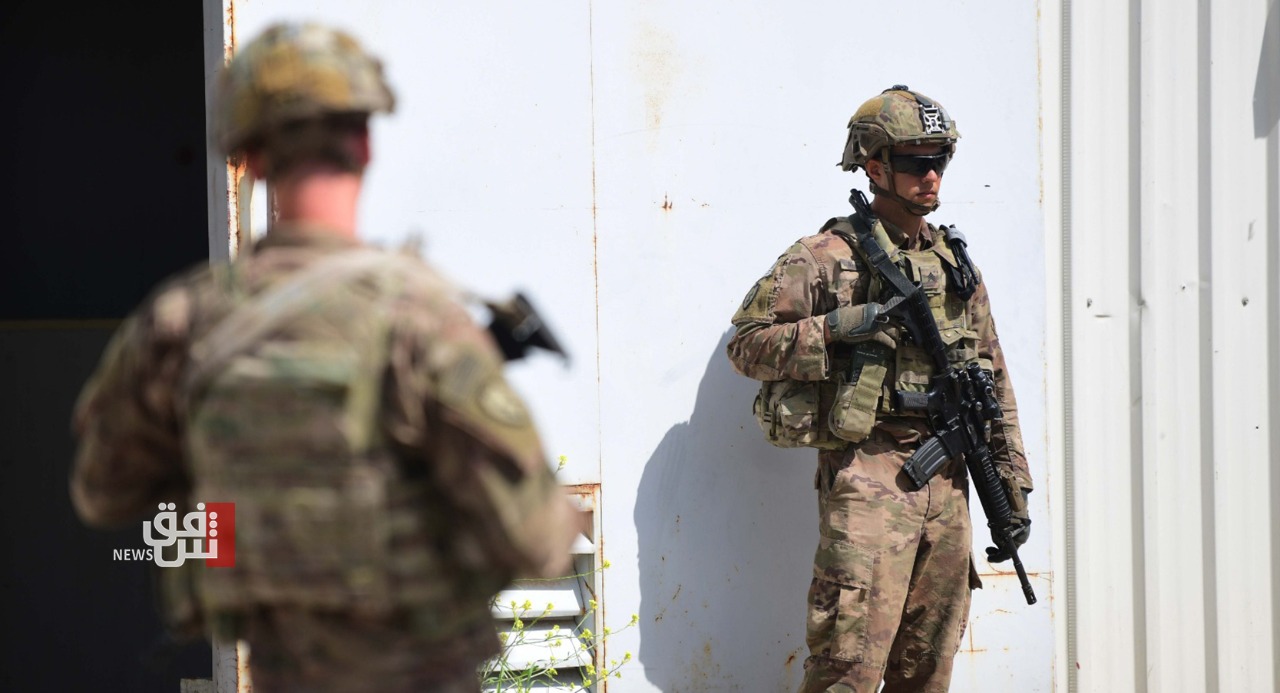
Shafaq News/ Rising isolationism among the U.S. public and the constant potential for escalation with Iran and its proxies in the Middle East means a withdrawal of U.S. troops from the region is inevitable. However, the U.S. lacks contingency plans for the region after the end of Operation Inherent Resolve (OIR), the U.S.-led military operation against the Islamic State in Iraq and Syria (ISIS).
OIR depends on the U.S. engaging “by, with, and through” local allies such as the Kurdish Peshmerga and the Syrian Democratic Forces (SDF). The deliberately small U.S. footprint of troops in Syria makes it necessary to run support for the SDF, including in engineering, aviation, and logistics, from Iraq. The U.S. is currently in discussions with Baghdad about OIR’s future through the Higher Military Commission, with possible options including the removal or downsizing of U.S. forces from Iraq, which would require increased cooperation among local allies. Yet the relationship, or lack thereof, between political elements within the Kurdistan Regional Government (KRG) and the SDF’s political body, the SDC (Syrian Democratic Council), limits room for cooperation over OIR.
U.S. policymakers must approach an eventual withdrawal in two ways. First, they should consider and plan for what happens after OIR – particularly if this occurs soon. Withdrawing will cause massive ramifications for counterterrorism, regional politics, and security, but having contingency plans in place would limit blowback on ISIS’s capacity and the U.S.’s strategic priorities in the Middle East concerning Iran. Second, they should consider how political relationships among allies in the region would affect OIR’s continued success in the event of a drawdown or withdrawal of U.S. troops in Iraq and continued U.S. support for the SDF.
Threat of Withdrawal
The U.S. faces pressure from multiple directions to reconsider its involvement in Iraq and Syria. Internally, the U.S. public is leaning increasingly toward an isolationist foreign policy. With the potential of a second Donald Trump presidential administration increasing ahead of November’s election, there will likely be discussions about OIR in the coming years. The Trump administration exhibited its willingness to withdraw U.S. troops from highly strategic zones in Northern Syria in 2019. President Trump still speaks of his administration’s defeat of ISIS, despite the group still existing in pockets of Iraq and Syria, to question the necessity of U.S. troops in both countries.
The Biden administration reportedly has considered redrawing Syria’s battle lines, with the National Security Council and the Department of Defense positing the ramifications of a U.S. withdrawal on the SDF-Assad regime relationship in January. Given the backlash the Biden administration still faces from the 2021 U.S. withdrawal from Afghanistan, it is highly unlikely that any large-scale withdrawals or drawdowns will occur concerning OIR before the elections. However, external shocks from the region itself could provide the momentum for a shift in thinking.
Internal pressure for a reconsideration of the U.S. force posture in the Middle East is mirrored by similar sentiments in Iraq. Iraqi Prime Minister Mohammed Shia al-Sudani has been under pressure from Iran-aligned figures, political parties, and militia groups to either remove or negotiate the conclusion of the U.S. force presence in Iraq since entering office in 2022. U.S. troops in Iraq help fill major capacity gaps in the Iraqi Security Forces, the Kurdish Peshmerga, and the Counter Terrorism Service, and the U.S. sends millions of dollars in aid to Iraq annually through OIR. Sudani nonetheless has taken steps toward realizing the end of the current U.S. role in Iraq.
One of these steps has been the creation of the U.S.-Iraqi Higher Military Commission in January to discuss the “transition to an enduring bilateral security partnership between Iraq and the U.S.” Baghdad’s stated objectives for the commission are to “formulate a specific and clear timetable … to initiate the gradual and deliberate reduction of its advisors on Iraqi soil.” Following Sudani’s April 2024 meeting with U.S. President Joe Biden in Washington, D.C., a joint U.S.-Iraqi statement about the meeting affirmed the two leaders’ commitment to the Higher Military Commission’s review of the necessary factors for determining the timeline for an OIR evolution.
The commission may not produce tangible change for the U.S. in the immediate future, but the operational environment in the Middle East may exert pressure for an accelerated U.S. withdrawal or drawdown in Iraq. Between October 2023 and February 2024, Iran-aligned militias in Iraq conducted almost 200 strikes on U.S. and coalition troops in Iraq and Syria. The militias began the attacks in response to Iran’s direction and only stopped, also at Iran’s direction, after one attack on an outpost in Jordan killed three U.S. soldiers in late January. Since then, the militias have been conducting attacks against targets in Israel but are reportedly willing to resume attacks on U.S. forces in Iraq and Syria if Israel invades Lebanon to confront Hezbollah directly. This escalation would likely cause a similar chain of events as this spring: Iranian-backed militia strikes lead to U.S. reactionary strikes on militia positions in Iraq and Syria, furthering calls from Iranian-aligned elements in Iraq to remove U.S. forces from the country and from the U.S. public to remove U.S. troops from harm’s way.
A U.S. withdrawal or drawdown in Iraq would have large-scale implications on both Iraq itself and the entirety of OIR. The U.S. plays the leading role in both troops and financial contributions. Civilian missions in Iraq from NATO and the European Union also rely on U.S. troops for security purposes, possibly tying the fate of these capacity-building missions to OIR as well. It is unlikely that other member states would be able to fill in the gaps left by a U.S. withdrawal.
ISIS attacks are already set to double this year across Iraq and Syria, according to the U.S. Central Command. The quarterly reports of the Department of Defense’s Lead Inspector General regularly mention the capacity gaps of the Iraqi Security Forces, the Iraqi Counter Terrorism Service, and the Peshmerga to effectively combat ISIS without coalition support.
Iranian-affiliated militias, including those involved in the Popular Mobilization Forces, would likely attempt to fill these capacity gaps, giving Tehran more influence in the region.
Iraq’s Role in Supporting OIR in Syria
Even more pressing is the future of the SDF in the event of a U.S. withdrawal or drawdown. The U.S. missions in Iraq and Syria are under the same OIR campaign but are distinctively different due to the countries’ operational environments and political situations. In Iraq, OIR operates with Baghdad’s nominal support and with around 2,500 U.S. troops. In Syria, OIR operates in opposition to the Assad regime, supporting the territorial control of the Kurdish-majority SDF in Eastern Syria, and with only around 900 U.S. personnel.
This limited troop size means OIR support for the SDF against remaining ISIS cells depends on U.S. military activities in Iraq, including intelligence, surveillance, reconnaissance, and command-and-control. The Syrian Logistics Cell partners with and coordinates between OIR, OIR’s special operations, and other sustainment commands. It plays a key role in anti-ISIS activities in Syria, as well as with the withdrawal the U.S. conducted from select bases in Northeast Syria in 2019 under the Trump administration, but it operates from Erbil. In the event of a withdrawal from Iraq, U.S. policymakers would be hard-pressed to find alternate venues to base their logistical support activities for the SDF.
Given the increased risk of an ISIS resurgence in Iraq, sustaining counterterrorism support to the SDF would be of the utmost importance to prevent the group from reconstituting its territorial control across the Iraqi-Syrian border. Any pauses in logistical support to the SDF from a U.S. withdrawal from Iraq, if they were to affect the SDF’s counterterrorism successes, would be exploited by ISIS. This is one of many factors, including political dynamics among U.S. regional allies, facing U.S. policymakers who are considering how changes to OIR in Iraq would affect Syria.
SDC-KRG Tensions
As OIR’s fate is called into question in federal Iraq, U.S. policymakers will likely look toward the KRG for support in northern Syria, but longstanding tensions between the KRG’s dominant Kurdistan Democratic Party (KDP) and the SDC pose a barrier.
These tensions are mainly a result of the entities’ relationships with Turkiye and, to a lesser extent, their political aspirations. Türkiye views the SDC as inextricably linked to the Kurdistan Workers’ Party, a militant group Türkiye has deemed a terrorist organization and from which the KDP has distanced itself.
In contrast, the KDP has built amicable relations with Turkiye over the decades due to its manageable political aspirations and its perceived distance from the PKK. The KDP and its main political rival, the Patriotic Union of Kurdistan, have worked to orient the KRG as the government of the semi-autonomous Kurdistan Region of Iraq. This has meant learning to balance the dynamics between themselves and Iran, federal Iraq, and the U.S. The KDP has aligned more heavily with the U.S. and Turkiye, the latter due to the KDP’s willingness to distance itself from the PKK. The SDC, meanwhile, has moved towards increased autonomy in areas under SDF control, evidenced by its long-standing aim to hold municipal elections. The KRG, with its desire for positive relations with Turkiye who disagrees with these sentiments, has largely followed Ankara’s lead. The KDP also founded the Kurdish National Council, a minority political party in the Autonomous Administration, which is a direct opponent of the Democratic Union Party that dominates the SDC.
Thus, the SDC and the KDP remain at odds, rarely coming face to face despite both sides publicly claiming to desire better relations. Because these are two of the U.S.’s largest political and military allies in Iraq and Syria, this is an important element to consider for U.S. policymakers when contemplating the fate of OIR.
Policy Recommendations
While it is unclear if the U.S.-Iraqi Higher Military Commission or other discussions will generate a withdrawal or drawdown of U.S. troops in the immediate future, U.S. policymakers must start to consider the perennial topic of a withdrawal from Iraq and develop contingency plans.
Scenario-building among the U.S. intelligence community, defense community, and OIR allies and partners in the region is vital to ensure that ISIS does not immediately exploit a power vacuum. This should include a focus on how OIR would continue to function alongside the SDF if U.S. forces lose their ability to provide logistical support from inside Iraq.
U.S. policymakers also must consider how political relations between key allies in the region will impact those contingency plans. If U.S. forces leave federal Iraq, tensions between the KDP and the SDC will likely affect how the U.S. would be able to factor the KRG into contingency plans to continue supporting U.S. troops in Syria. One such contingency plan among the many that should be considered would be to offload U.S. troops in federal Iraq to the KRG to logistically support the SDF. The dynamics of this contingency plan, as one of many that should be considered by U.S. policymakers, would alter the geopolitics of relations between the U.S., Turkiye, the KRG, and the SDC.
Increased collaboration and communication between the SDC and the KRG is critical for the stabilization of Iraq and Syria in the case of a U.S. drawdown or withdrawal. It is one element that must be factored into wider contingency planning efforts across the U.S. government to ensure that an eventual withdrawal leaves the region as stable as possible.
